|
Genres, Themes, Actors, and Directors:
- Aspiring Stars
- Dancers
- Jimmy Stewart Films
- Musicals
- Romance
- Roy Del Ruth Films
- Sailors
Response to Peary’s Review:
Peary writes that this “carefree Depression Era musical” — directed by Roy Del Ruth and starring tap dancing legend Eleanor Powell — “is corny and campy, yet enjoyable”. He points out that the story is “silly” (see the synopsis above) and possesses an “unconvincing plot twist” (most definitely true!), but notes that “there’s some okay comedy”, a “fine, varied Cole Porter score” (including “I’ve Got You Under My Skin”), and “absolutely terrific… tap routines” by Powell.

Unfortunately, while Powell is pretty and earnest, she isn’t the most nuanced of actors, and gravitates towards one facial expression (smiling, toothy mouth wide open) while dancing; Peary notes somewhat uncharitably that “when standing still” she “looks like she’d be a crummy Amateur Hour contestant”. But Stewart (apparently suggested for the part by Porter) is fine in one of his earliest roles:
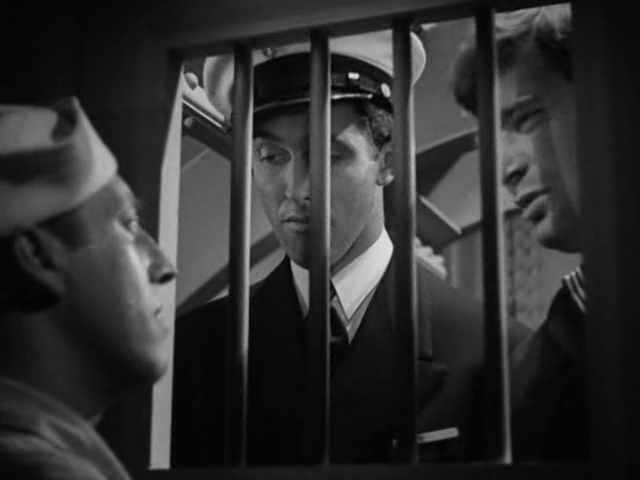
and gets to warble “Easy to Love”.
Note: Of interest is the brief but memorably loopy scene with a “switchboard operator” (Helen Troy) “who anticipated by thirty years Lily Tomlin’s Ernestine:”
[describing Jimmy Stewart] “Oh, say — guess who I seen at Club Continental last night? Lucy James with that sailor she met through a Pekingese. Believe me, he’s a sea-goin’ thrill if I ever seen one. What’s he like? Well, tall — sort of the answer to a maiden’s prayer on stilts. Honest, he must be six feet four, and that’s just two inches shorter than a totem pole. Oh, but he’s got a smile like concentrated vodka! Vodka? Oh, it’s a Japanese drink made out of panther blood, I think.”
Redeeming Qualities and Moments:
- Powell’s dancing
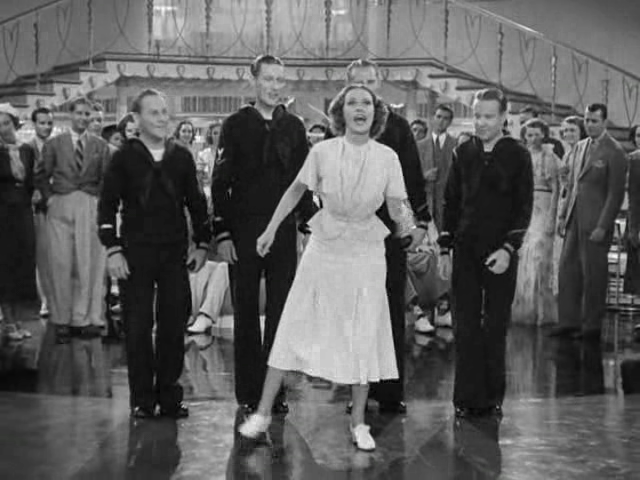
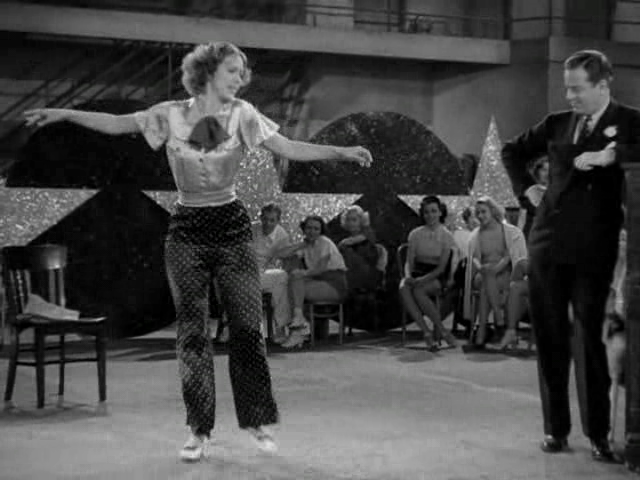
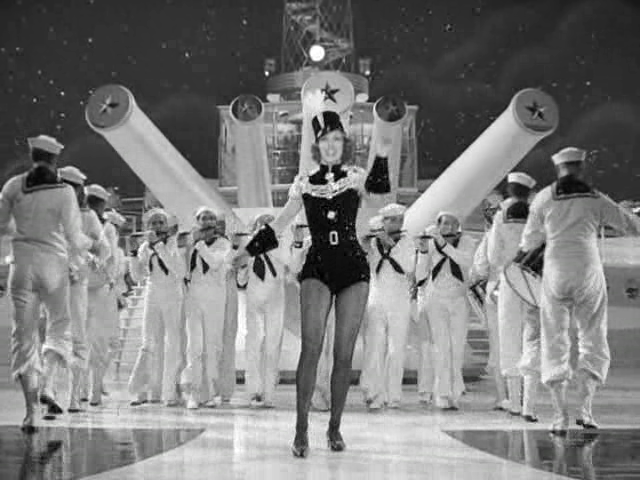
- Fine cinematography and Art Deco sets
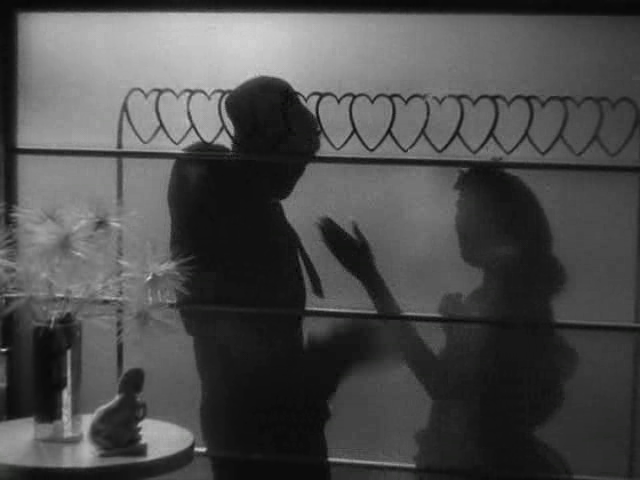
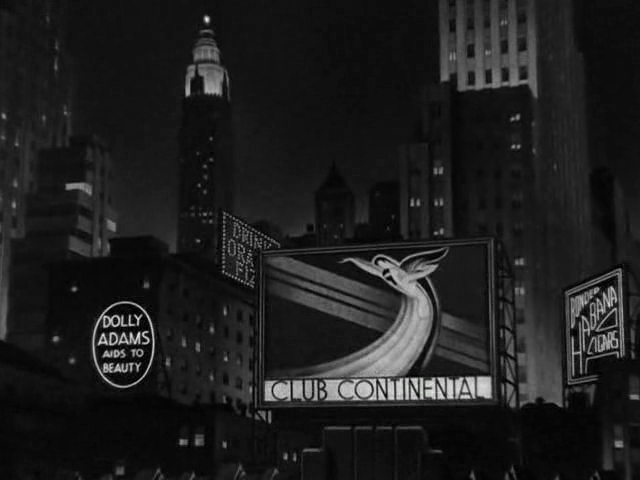

- A couple of fun comedic interludes

- Cole Porter’s score
Must See?
No, though it’s worth viewing simply as Powell’s iconic flick.
Links:
|
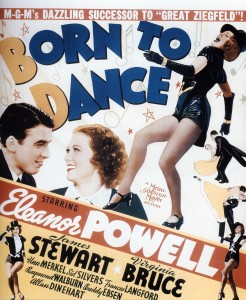









One thought on “Born to Dance (1936)”
A once-must, as a fine example of a period musical – and for its lively entertainment value – and esp. for Powell.
‘Born to Dance’ (Peary’s comment notwithstanding) is neither corny nor campy. (Although it’s easier to spot corn, it really does bother me when a reviewer simply does not understand what camp is.)
Unlike most of the Depression-era musicals (including some of the more ‘beloved’ ones, like ’42nd Street’), ‘BTD’ does not have a cringe-worthy script…we don’t have to snore in-between musical numbers; the dialogue is fairly buoyant and the plot moves along at a nice clip (largely thanks to Del Ruth’s snappy direction).
One of the more ‘daring’ sequences involves Stewart and Powell having a look at a display of a newlywed couple’s ‘dream house’: the agent showing the model home – with his uniquely floral vocabulary – is clearly gay.
What’s particularly enjoyable is that Cole Porter’s songs – and they are wonderful throughout – are not at all subservient to the plot; in fact, they are often embellished with arrangements that heighten their importance. The score is among Porter’s best work – and it reaches a satisfying fullness in the knockout (and extended) Broadway show sequence that closes the film.
The cast is a whole ton of fun. Merkel (so charming) and Silvers (one of the writers of the film’s story and among the script writers) offer up natural chemistry as the tentative married couple. Stewart seems to be having a great time as a light leading man (his singing voice is soothing). And even though she is not a great actress, Powell doesn’t need to be – at least not here. It’s refreshing seeing this dynamite dancer get to shine in a leading role – and we all know, anyway, we’re here for the most part to see her dance. And does she *ever*! Powell remains in the Top 5 Best when it comes to the female dancers in classic cinema history.
Sidebar: A pleasant vocal addition in several sequences comes from the quartet known as ‘The Foursome’: J. Marshall Smith, L. Dwight Snyder, Ray Johnson and Del Porter.